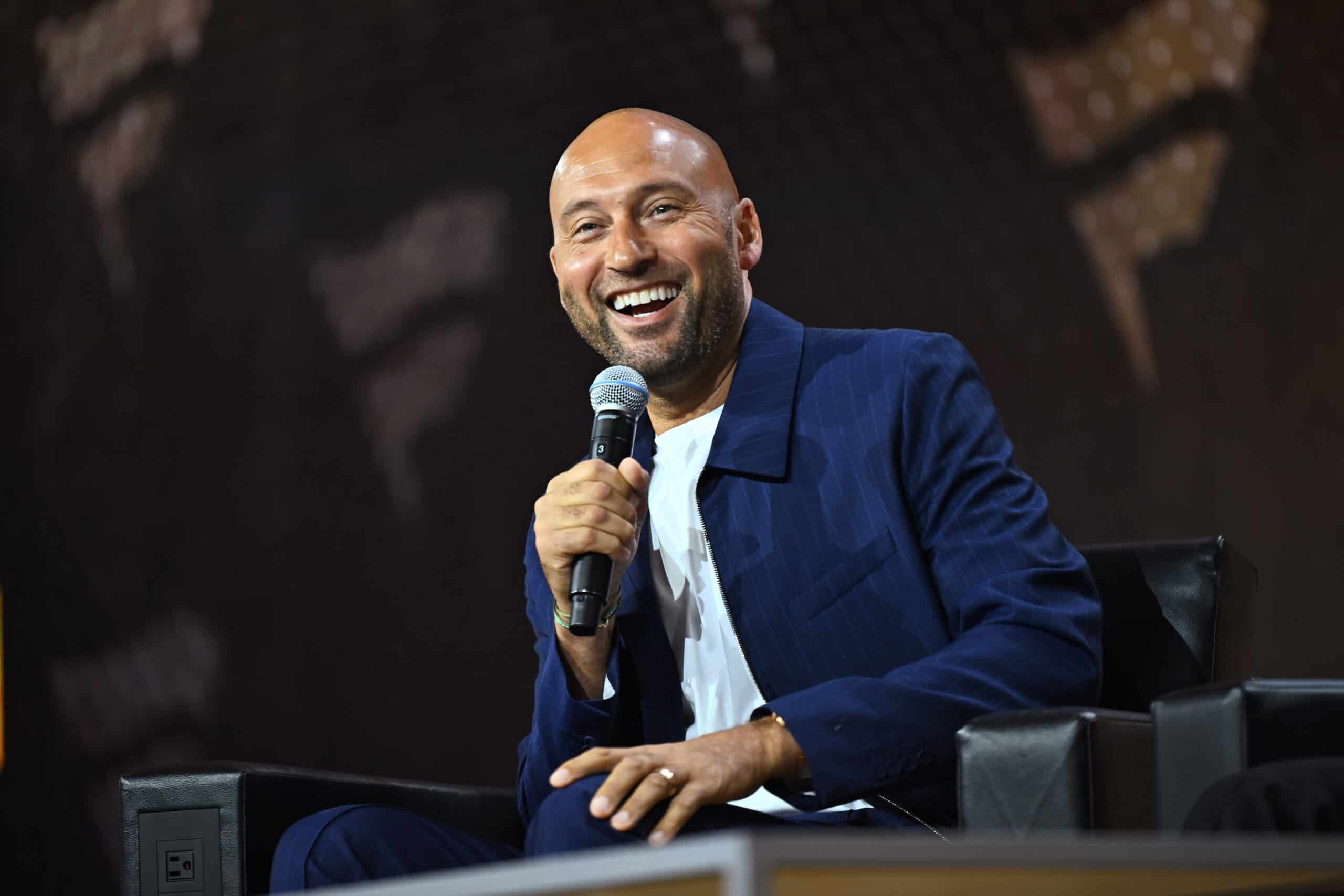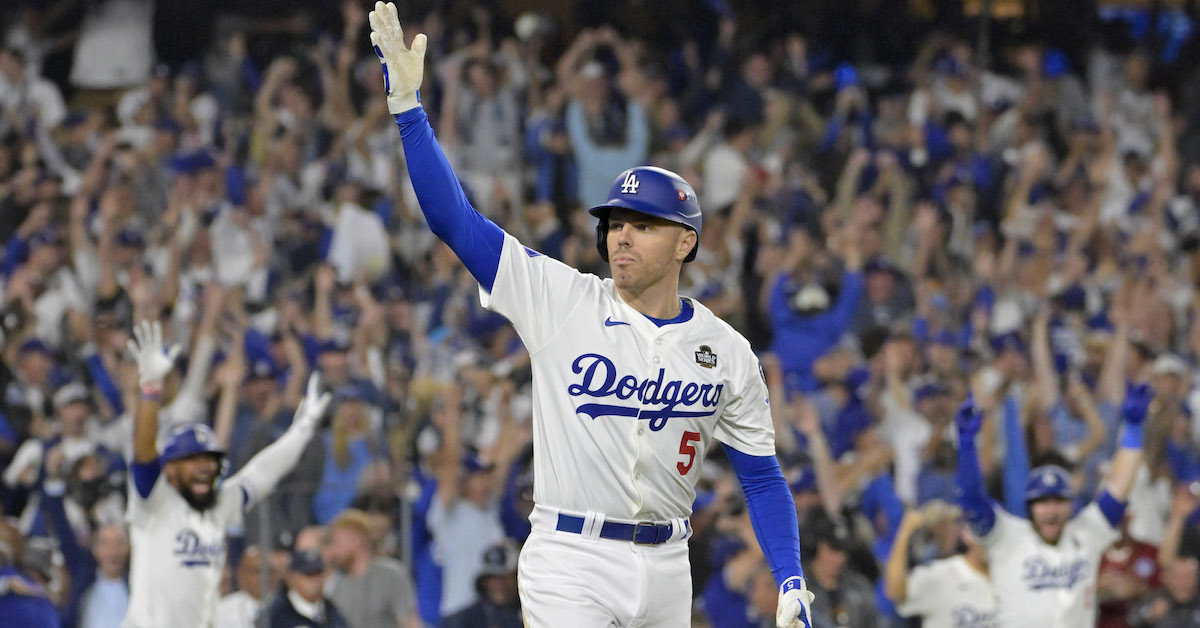[ad_1]
Joe Camporeale-USA TODAY Sports
Colson Montgomery learned a lot about himself as a hitter this season. The result of that introspection? He’s going back to the approach that not only helped make him the top prospect in the Chicago White Sox system, but also has him ranked 17th overall on The Board. Striving for more pull-side power, the left-handed-hitting shortstop slashed a disappointing .214/.329/.381 with Triple-A Charlotte. And while the 22-year-old did hit a career-best 18 home runs, he also fanned 164 times while logging a 28.6% strikeout rate.
With the caveat that the 2021 first round pick was one of the youngest players in the International League, Montgomery clearly underperformed expectations with the bat. A readjustment was in order.
Montgomery, who is currently doing some fine-tuning with the Arizona Fall League’s Glendale Desert Dogs, discussed his learning-curve season earlier this week.
David Laurila: What has the development process been for you in terms of your mechanics and approach?
Colson Montgomery: “Earlier in your career, it’s kind of an experiment of who you are as a hitter. You don’t really know yet, because you probably haven’t faced adversity or failure. Also, when you’re a lot younger, you aren’t facing the best arms. The sooner you can go against the best of the best arms is when you can learn a lot about yourself.
“Early in my career, I figured that I was more of a contact hitter, hitting the ball where it was pitched, pretty much. When I got older and started getting a little stronger, I started trying to use that power and strength for more homers. I tried pulling the ball a little too much. That’s kind of why I faced a lot of struggles this year. I got away from who I was, which is a guy who takes his walks and hits the ball where it’s pitched. Then, if I hit the pitch that I’m looking for, I’m able to do damage on it; occasionally I’ll catch one out front and hit a homer. So, I’m really just trying to be on time — kind of have a little dance with the pitcher — trying to get myself in the best position to hit the ball that I want to hit.”
Laurila: You definitely have the build to hit for some power. Has your physicality changed at all since entering pro ball?
Montgomery: “I’m 6-4, 235. When I was drafted, I was 6-3 and around 190, so I’ve put on some mass. I think a lot of that has been natural, but I’ve also worked my butt off in the weight room to get stronger. You’ve got to do that in order to withstand a long season.”
Laurila: Getting back to how not trying to pull the ball for power is an adjustment you felt you needed to make…
Montgomery: “Yes. I would say the majority of the year I felt like I was pulling the ball more. I don’t know if that was because I was playing in Charlotte, which is a shorter ballpark and I felt like that was all I needed to do. That said, if you look at my hit graphs, I actually was spraying the ball across the field. Again, that’s what I do well, hit the ball where it’s pitched and not try to do too much. I’m happy that I went through the struggles this year. I really learned a lot about myself.”
Laurila: Were there actual mechanical changes when you were trying to pull the ball more?
Montgomery: “I would say that it was more that I was under the ball all the time. There were times where I felt like I was on time, but then I’d swing and miss. I’d be like, ‘Why am I swinging and missing?’ It was because my bat head wasn’t in the zone long enough [compared to] what I usually do.”
Laurila: What led to that from a mechanical standpoint? I’m guessing your lower half played a role?
Montgomery: “Yeah. That kind of steers my initial move, and my cue is my hands. Once I get into rhythm here [hands in the firing position], everything else unloads the way I want it to. I think the biggest thing was that I kind of changed… there were times during the season where I was kind of waiting to see the pitch, rather than expecting the pitch. When I expected the pitch was when I was at my best.”
Laurila: How much of that is instinct, as opposed to scouting reports?
Montgomery: “I would say a lot of it is instinct — most of it is instinct — and if I’m expecting fastball middle away, that helps me stay on the pitches a lot more. If I see breaking balls, I’m able to clean them out to right. But the majority of the time, I’m thinking fastball middle away and trying to hit it through the batter’s eye.”
Laurila: Does “hit it through the batter’s eye” mean trying to drive the ball 400 feet, or are you are simply trying to square up the baseball?
Montgomery: “I’m pretty much just trying to hit the ball. I mean, once I get myself in the right position, and I’m expecting, everything else kind of just goes black. I pretty much just swing. You react to your instincts. I think I got away from trusting my instincts a little bit this year. I’m happy that I’m back to trusting my instincts a little better.”
Laurila: Did the level of competition you faced this year play a meaningful role in the struggles you had, or was it mostly just on you?
Montgomery: “I mean, I faced a lot of really good pitchers, but I do think that a lot of it was me. I was in a little bit of a mental funk, trying to figure out what I needed to do, when it was the simplest thing. Expecting the pitch was really all I needed to do. So yes, I would say a lot of it was just myself.”
Laurila: One last thing on trying to hit for more power: Was that something the organization wanted, or was it mostly you thinking, “I’m a big dude who can juice a baseball”?
Montgomery: “It was all me. The org wanted me to stay the way I was. I was driving the ball where it was pitched, all over the field, and again, that’s when I’m at my best. I just got away from that. I really don’t know what else to say. That’s pretty much all it was. But I’m feeling really good now. I think I’m back to where I need to be.”
Earlier “Talks Hitting” interviews can found through these links:
[List of previous interviews]
[ad_2]



